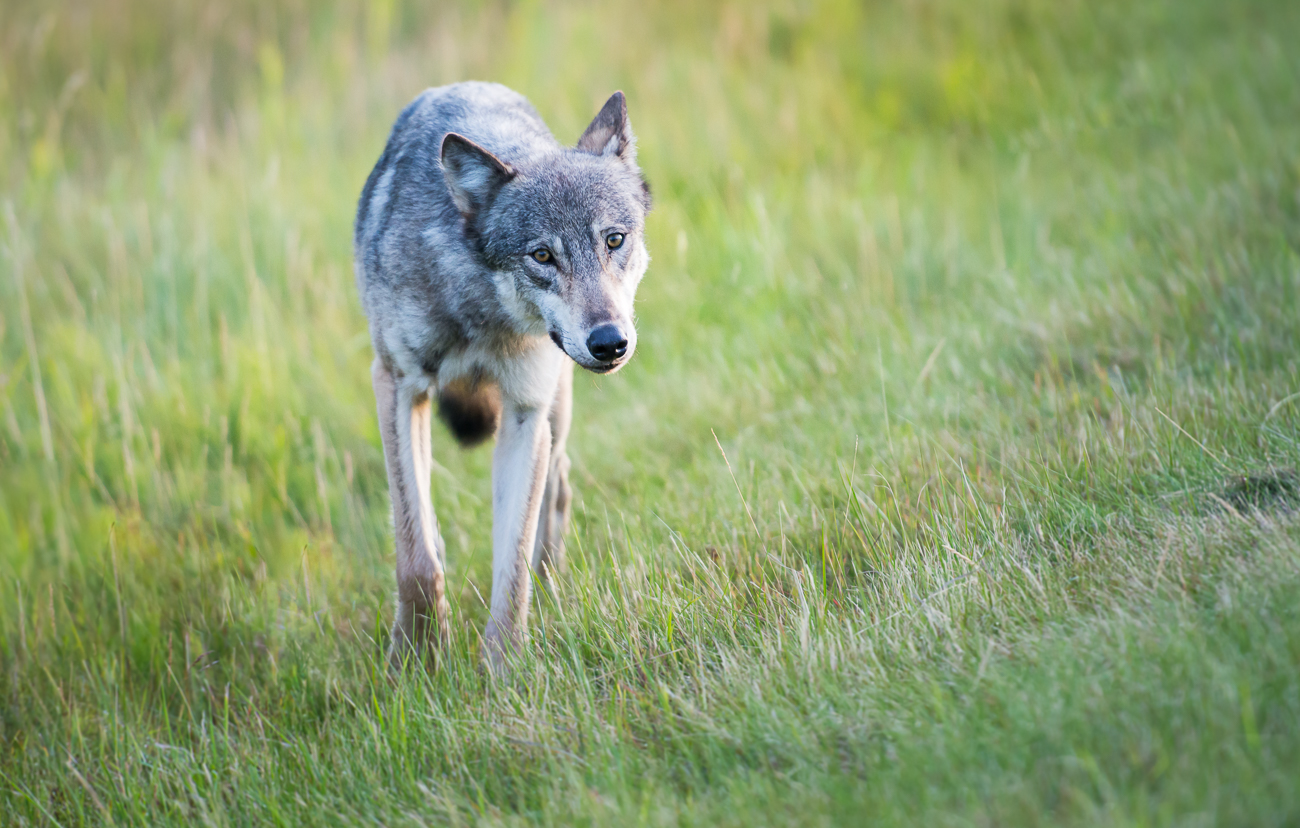Hard Stuff is Hard
Chapter Four
“You look at somebody like Elon Musk, as an example. What the guy has done in terms of launching rockets or changing how cars are being produced? Significant impact on the environment. He has single-handedly changed how people perceive, or will perceive, automobiles. That is an idea, not exactly his alone, that impacts an entire generation and the world.”
Mohnish Kamat has helped solve big problems for some of the world’s most influential financial institutions and has seen the power of an idea to change the world.
“Ideas by themselves are good, but having ideas which are talked through and implementable? That’s the key.”
 It’s why, Mohnish says, whether you’re overseeing a global enterprise or trying to use good research to drive better solutions for biodiversity?
It’s why, Mohnish says, whether you’re overseeing a global enterprise or trying to use good research to drive better solutions for biodiversity?
“What I think is important is focus. What can you do? What can you focus on? And how can you provide constructive ideas which somebody can act upon?”
Why does focus matter in problem solving? Mohnish tells us, think about this:
“One example would be (banning) single use coffee cups. Okay, then you have to switch to a tumbler. The tumbler has to be incented by the corporation for a coffee user to actually stop using the single use coffee cup. But if you just say, ‘hey, guys, I don’t like the single use coffee cups’. That doesn’t help anyone. But if you (teach the public) that single use coffee cups are bad and how about a tumbler – a tumbler made out of natural material? And how about the corporation incents the user to use the tumbler? Then you combine everyone’s interests and it’s a win-win situation.”
For that reason, Mohnish adds, in many ways, decision making isn’t about choosing what to do.
“People think strategy is about good ‘and’ choices. Actually, strategy is about choosing what not to do and choosing focus.”
So, where to begin? By asking this simple question:
“What is the problem or opportunity we are trying to address?”
Michael Kennedy is a management consultant – a fancy term for a human Swiss Army knife that roves from project to project, helping teams make better decisions and produce better results. Michael’s clients have ranged from government to businesses to the non-profit sector and, he says, no matter the industry or issue, every good decision starts with understanding the problem.
“I make sure I, and everyone involved, understands the problem. This is normally the hardest part; it’s amazing how much time can be wasted when people don’t actually ‘get’ what’s wrong.”
From there, Michael says, it’s imperative to ask these four questions:
-
-
-
- What benefits are we trying to achieve? This is where we get specific about what we want to improve. Sometimes we want to make something take less time or energy, sometimes we are trying to communicate something to a wider group of people. Whatever the case, what are the outcomes of the project? What are the desired results of your ‘thing’ being put into the universe? It’s hard, but if you can quantify your desired benefits with numbers, all the better.
- What has to change to realize those benefits? This is where people come into play. All projects impact people in one way or another. Answering this question is key to pinpointing the specific processes or activities or gaps that our project is going to attack.
- What is the project scope? Now we are in a position to figure out what we’re going to do. If we want to get from A (the problem), to B (the solution), by changing C (question 3), what all needs to happen? Do we need to design and rollout an awareness campaign? Do we need to buy and install some new software? Do we need to organize a march? Do we need to review and write a new policy or operating procedures? And what are the steps to do that?
- Who is the sponsor? A project sponsor is the champion of the project.
-
-
Michael believes having a champion is critical to finding solutions that last. Whether it’s a mentor, a funder or a community influencer who can help open doors or trouble-shoot problems, almost every successful idea needs a champion.
But don’t answer these questions alone.
 Just as the lone wolf isn’t a real thing in nature, being a lone wolf doesn’t really work when it comes to advancing ideas, research or stories either. Every successful idea needs a team, Michael tells us.
Just as the lone wolf isn’t a real thing in nature, being a lone wolf doesn’t really work when it comes to advancing ideas, research or stories either. Every successful idea needs a team, Michael tells us.
“The notion of a genius locked in a basement coming up with brilliant ideas is false.”
Maybe you’re trying to determine what to research. Maybe you trying to determine how best to use your research results to solve a societal challenge. No matter. Michael’s advice is still relevant.
“Opening up problems to the group is definitely the way to go. The hardest part of group problem solving is getting everyone on the same page about what the problem is. Once that’s done, groups are typically very quick at coming up with great solutions.”
Which is why, even if teamwork is the way to go, leadership still matters, Michael adds.
“A clear decision-making hierarchy is necessary on a project to keep things moving.”
To accomplish that, Michael argues, it’s helpful when different people lead in their own ways, playing to their strengths and “owning” their own part of a problem or a decision.

Just make sure, Michael tells us, that individually and collectively, everyone “swallows the big ugly frog.”
Say what?
“It means, suck it up and deal with the biggest, ugliest thing there is to deal with. Don’t mess about addressing small problems just because you know how to take care of them. If there’s a big, ugly problem? That’s where you need to spend your time. There’s always a path forward.”
And when in doubt, look to nature for inspiration, Michael advises.
“I love seeing plants compete with one another for sunlight and water, twisting around trees and over boulders to get what they need. There’s always a way. And if there isn’t? It wasn’t meant to be.”
But when swallowing the big ugly frog, remember:
“Innovation takes time and energy; these are limited things for all organizations. My advice is to be strategic and innovate where you’re looking to differentiate and stand out; copy and follow best practice where you don’t.”
That’s important advice from Michael Kennedy. So too is this from Shawn Smith:
“Understand the bigger picture of why a problem is happening, and be intentional about doing work that can impact that whole system, rather than just a little part of it.”
Shawn is the co-founder of RADIUS – a social innovation lab at Simon Fraser University in Vancouver.
“It doesn’t mean you have to work on the whole system, just that with a little research and better understanding of why something isn’t working well, you can aim your own efforts in a way to have the most impact. Make sure you are contributing to actually changing how things work for the better, rather than just applying a temporary Band-Aid to a problem.”
Shawn’s launched innovative projects and helped others do the same through RADIUS. What he’s learned? The importance of rigour.
“Rigour means we are willing to ask ourselves hard questions about whether something is really working, or what we need to learn, change or stop. It also means being transparent, and sharing what we learn, even if it means sharing that we failed at something.”
After all, maximum impact should always be the goal.
“Doing the work isn’t good enough, we need a relentless focus on whether it is actually having an impact on the system we want to change. We have limited resources, so we need to try to be thoughtful in deploying them in a way that creates as much positive impact as possible.”
That’s why Amanda Gierling wants you to realize this:
“If you can’t manage your own finances, how are you going to possibly take an idea to the next step?”
Amanda Gierling is a Chartered Professional Accountant and a principal analyst for the Office of the Superintendent of Financial Institutions.
 “Start from a young age and understand money, finances, debt. All of that is what’s actually going to lay the foundation (for success). And if you want to take your idea to the next level, money is always involved in every aspect. It’s always going to be. You can’t get away from money because it’s how our world works. So, if you are not able to get through the details and understand what’s what in regards to finances, I think that you’re already a step behind.”
“Start from a young age and understand money, finances, debt. All of that is what’s actually going to lay the foundation (for success). And if you want to take your idea to the next level, money is always involved in every aspect. It’s always going to be. You can’t get away from money because it’s how our world works. So, if you are not able to get through the details and understand what’s what in regards to finances, I think that you’re already a step behind.”
After all, solutions only work if they’re financially sustainable – for the advocate and for the stakeholder. It’s why in both cases, Amanda tells us, we must remember “the best businesses are the ones that manage their expenses.”
In other words, if a solution creates major expenditures for a business or a government, it’s probably not going to fly.
“When you have a for-profit organization, you have a product or a services. It’s not just about what you make from that. The variable is cost. So, you have your fixed cost, you have variable costs and that is what needs to be under control in order to turn a profit at the end of the day.”
Which isn’t to say resources should limit creativity, as philanthropic innovator Gena Rotstein argues.
“I don’t see the world through a lens of scarcity, I see it through a lens of abundance. Resources? For me, that’s a systems issue.”
And whether you agree or not, Amanda believes to solve problems in today’s world, we must understand the financial realities of an issue.
“From my perspective, and my point of view as an accountant, it’s very important to actually dig deep. You have to dig deep and you have to get the details in order to fully assess the situation on its own.”
Project management guru Michael Kennedy agrees.
“You need to manage your resources – people, money, space, anything that is limited and you need to get things done.”
With that in mind, we asked Michael if more of us need to take a business approach to decision-making?
“If a young person is angry about something, if they want to see change, they need to learn how to craft their message, mobilize resources, and get it done. Best practices (many coming from business) can be learned from books and courses, and on the job. You become a tool of change by honing your skills and becoming effective. Don’t discriminate when it comes to where the lessons come from.”
Exactly, says financial executive Mohnish Kamat.
“Not-for-profits need to be thinking about their area of interests in a business context.”
Mohnish adds, “How would an external audience see your proposition? And a bit of skepticism and a bit of reality is important if you actually want to get things done.”
 So, to solve complex problems – to make better decisions in our research, for our stories and for our world – start here:
So, to solve complex problems – to make better decisions in our research, for our stories and for our world – start here:
“Think about the contribution that you want to make, and think about something in the world that you care about, that interests you, that you could actually do something about.” – Sandra Odendahl | Engineer & Financial Executive
Then?
“What I would suggest is actually engaging at a human level. It can be really small. If you care about something in your community? Maybe you care about parks. You don’t have enough parks; you don’t like how the parks are done. Find out who in your town or city or community looks after parks. How do they make decisions? How do they get input from the community for those parks?” – Donna Kennedy-Glans | Author & Former Alberta Cabinet Minister
Good advice!
“But don’t expect to be the one-stop-shop for solutions. Respect that there are going to be a lot of things that must move in concert, or independently of each other, for change to happen.” – Garrick Ng | Storyteller & Innovator
True! Also:
“Unless we’re actually able to capture the imagination and the understanding of our population more broadly, we won’t achieve the success that we need to achieve.” – Hon. Janet Austin | Former BC Lieutenant Governor
That means good decisions need to avoid this:
“People not saying ‘you’re wrong, I’m right. This is the only way it’s going to go’. It’s about sitting down, ideally one-on-one, having a conversation.” – Nancy Newhouse | Biologist & Conservationist
An important point, because good decisions?
“Figure out how one person, on a very small scale at first, could then engage another person. Like a one-to-one effect, or two people. And that’s really hard to do because that means that people have to feel ownership of the issue. If you can figure that out? That means you really touched on something that people care about, or people have been wanting to have a roll in.” – Salimah Ebrahim | Innovator & Journalist
And always remember:
“There’s not one answer, or one right answer to anything.” – Dev Aujla | Author & Change Maker
That’s especially true if the goal is finding a better balance between the needs of people and nature. Just remember, in the face of the status quo, there is almost always a better solution – a better idea or story – that demands better results for both people and nature.
To find it, as you know, we must ask the better question and never stop asking it – and evolving it – at every stage of the decision-making process.
The answer? It can help us brainstorm ideas that might work, allowing us to then take a step back to look for a pattern – a path – to focus on, leading us to the best possible outcome. And that outcome? It should play to our strengths and allow us to achieve maximum impact.
And don’t forget:
“Our world changes when people believe things that are impossible and do them.” – Ilona Dougherty | Youth Researcher & Advocate